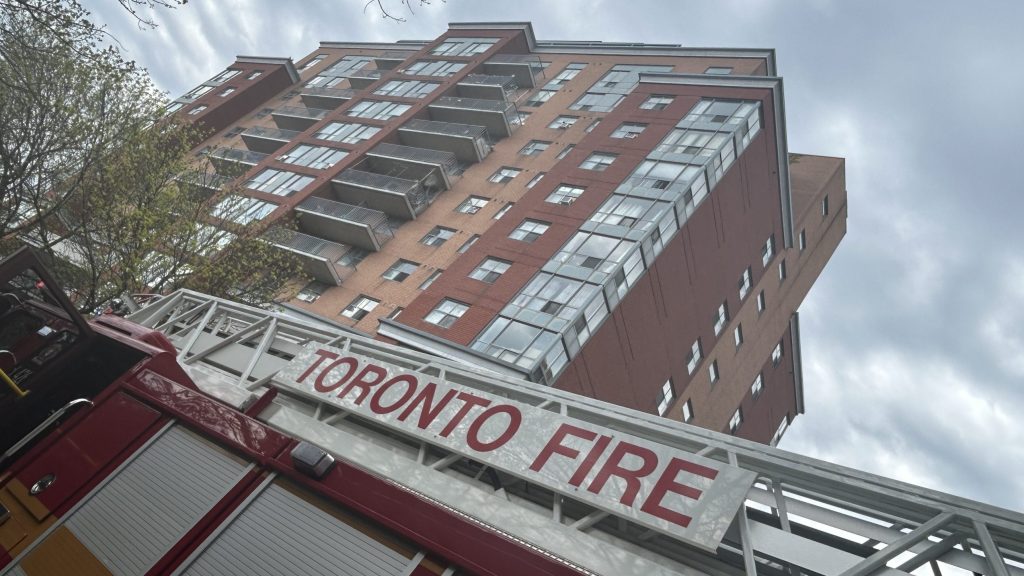Looking at how Canadians, including non-drivers, are paying more due to soaring gas prices
Posted June 22, 2022 9:41 am.
Last Updated June 22, 2022 9:42 am.
With much of the discussion surrounding soaring gas prices primarily revolving around what drivers pay at the pumps, the high rates are permeating throughout multiple parts of the economy and in the end almost all residents are shouldering the burden.
“This is not a perfect storm, but it’s getting close to being a perfect storm in the sense of increasing gas prices,” Opher Baron, a distinguished professor of operations management and the academic director of the MMA program at the University of Toronto’s Rotman School of Management, told CityNews in an interview.
“I don’t see any significant change in price certainly unless there’s going to be a specific intervention. I don’t see gas prices going down and I hope they’re not going to climb up too much.”
Baron said with gas being among the most tradable commodities and mixed with higher inflation, it’s creating a lot of uncertainty — bringing with it more variability than we have seen.
RELATED: Toronto and GTA gas prices
“[Gas is] a commodity it’s something that goes into almost everything we do, so people typically think of gas prices as ‘Oh I’m going to the gas pump because I’m driving somewhere and it’s suddenly costing $100 to fill my tank,’ But you have to remember that everything we consume is being transported and consumes gas a result,” he said.
Throw in increased summer usage of gas, stronger economic activity coming out of COVID and the war in Ukraine, those factors are also weighing heavily on the current situation.
Despite everything facing Canadians on the economic front, Baron said we’re not in as worse a place as one could have predicted at or before the start of the pandemic.
“It’s not that we’re in a great place, but comparable to what I would think about with two years of little or no economic activities,” he said.
Here are several of the ways we’re all currently, or will be, paying more for gas- and fuel-related costs and how those are impacting various sectors:
E-commerce
Baron said e-commerce has seen a boom throughout the course of the pandemic with more Canadians turning to online channels to order items, especially during times when COVID-19 restrictions limited opportunities for shopping.
However, he said it’s going to be “harder and harder” for businesses to compete when it comes to offering free or low-cost shipping.
“I think the sector of e-commerce and online sales may feel the heat of this (gas prices) as well,” Baron said.
Farmers and food production
Peggy Brekveld, the president of the Ontario Federation of Agriculture (OFA) and a dairy farmer near Thunder Bay, Ont., told CityNews through an OFA spokesperson that she has seen a 33-per-cent increase in spending on fuels per litre to operate the machinery on her farm.
When it comes to costs facing farmers, they’re being impacted in two additional ways — all of which can ultimately impact the final cost of goods for food consumers.
Brekveld said the cost to buy feed for her cattle and other farm inputs such as fertilizer have risen because of the higher cost to transport those supplies to the farm.
After the products are ready, farmers are needing to absorb the extra costs of shipping the items down the supply chain to processing facilities and grocery stores.
“Not only is this increasing financial pressure on farm businesses, but also impacting stress levels and overall mental health for the farming community,” Brekveld recently wrote in an open letter on the OFA website.
Governments
Governments, which maintain fleets of vehicles for staff and crews to carry out duties in, are seeing increases in bulk gas prices, which means boosting fleet-related, taxpayer-supported budgets.
Looking at the City of Toronto, for example, municipal staff have budgeted $17.2 million for all fuel types (gas and diesel included) in 2022. The City is paying an average price of $1.08 a litre.
In 2021, the municipality spent $15.5 million at an average price of $1.05 a litre. Going back to 2012, the City spent $14.5 million.
As the City deals with continued increasing costs, it’s also in the midst of a sustainable fleet transition plan — one that began in 2004. In an effort to reduce dependency on gas and diesel by 2030, it calls for 45 per cent of all vehicles to be low carbon.
Public transit
Public transportation, primarily funded by farebox revenue but also subsidized by taxpayers, haven’t been able to escape rising fuel prices. While more transit agencies are beginning to embrace electric vehicles, many buses and trains run on diesel.
“We are always into affordable public transportation and obviously with increasing gas prices, this becomes a little bit harder to supply for governments,” Baron said.
CityNews previously looked at how diesel prices are impacting public transit agencies.
Joseph Reid, the general manager of transportation and operation services for the City of Belleville and a volunteer with the Ontario Good Roads Association, said in May his department has had to increase its 2022 budget in response to the price hikes. However, he said a locked-in, multi-year contract along with hedging is partially helping to offset the current high prices.
Closer to the Greater Toronto Area, GO Transit, UP Express and the TTC all have major diesel fleets.
According to a statement from a spokesperson for Metrolinx, the Ontario government organization that oversees GO and UP, the agency expects to use 83 million litres of diesel for rail and bus services. The majority (78 per cent) is for rail, and a locomotive can burn nine to 15 litres of diesel fuel a mile, depending on the train size. The spokesperson said hedging helps “reduce risk” and noted fuel makes up 10 per cent of the overall budget.
In a statement at the time, a TTC spokesperson told CityNews the transit agency is forecast to spend $82 million on fuel this year.
“Given extreme market volatility, the ultimate impact on the 2022 budget cannot be confirmed at this time. Impacts will be reported through updates to our board,” he wrote.
“Reduced year-over-year consumption and hedging a portion of our diesel requirements will help offset the higher price.”
There were no immediate indications at the time that higher gas prices and diesel costs will ultimately impact what riders pay at the farebox.










